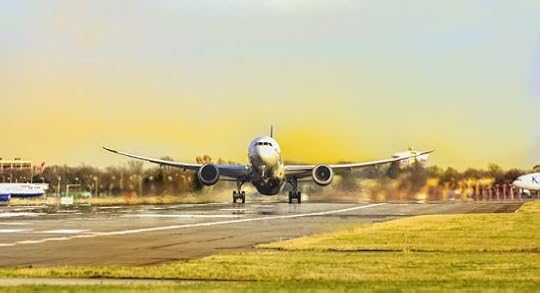Automation of Modern Airplanes

Automation of aircraft has been in the development process for decades. This trend continues, and the automation of modern airplanes was done for several reasons, but primarily because the industry and the flying public demanded something new, an improvement on what they had. This improvement trend extended to everything, not just to things aviation. Secondly, the accident rate was unacceptable, and some were attributed to pilot error in operation of various systems.
Let’s look at some early development.
Early aviation innovation can be traced back to 1933. The Boeing Company in Seattle, Washington developed the first modern transport the 247 which soon entered commercial operations with United Airlines. This airplane was constructed of all metal and included a cantilevered wing (A large beam within the wing, referred to as the main spar, runs through the wing from nearly wing tip to wing tip). Using a strong internal spar eliminates the need for external and internal bracing which reduces drag and increases speed. Also, the 247 had retractable main landing gear, another large reduction in drag while in flight. Other improvements included on the 247 were ailerons, rudder and elevators equipped with ace trim tabs, de-icing boots for the wings and tailplanes. To reduce pilot workload Boeing also included an autopilot. The engines were equipped with variable-pitch propellers which gave better takeoff performance as well as greater rates of climb and cruise speed.
The goal of Boeing was to build an airplane to cater to passenger comfort, speed, and reliability. It had an isolated partially soundproofed cabin to reduce engine noise, upholstered seats, and a built-in water heater.
Not to be outdone by Boeing, the Douglas Aircraft Corporation began development of their DC-1 which entered commercial service with Trans World Airlines. Although Boeing began the trend, Douglas designed and built a truly advanced airplane that included some automatic systems, improved wing flaps for flight at low airspeed, an autopilot, as well as retractable main landing gear, controllable pitch propellers and deicing boots. Even though the DC-1 was ahead of its time, it was not perfect.
Douglas continued innovation and development which resulted in the DC-2, then the DC-3 – the most successful airplane ever built.
World War II contributed a great deal to rapid innovation in aircraft design and utilization. Military needs dictated the development of bombers and fighters as well as transport and utility airplanes. Speed, rate of climb, and flight time endurance were improved. Perhaps, the greatest innovation for modern aviation during World War II were the jet engines and radar. Transponders were installed to identify friendly airplanes within range of the radar site, thus being able to separate friendly and enemy aircraft.
After many failures, the jet engine was finally succeeded in becoming operational in England and Germany. Fighter aircraft equipped with jet engines were able to fly higher and faster than aircraft equipped with conventional reciprocating engines and propellers. The disadvantage of the early jet engine – and it continues to today – is the high fuel consumption and limited radius of operations.
Along with the innovation of aviation engines and automation was the increase of the awareness toward safety. Following the crash of TWA Flight 599, an all wood Fokker tri motor airplane in March 31, 1931, that killed eight people, including the famous football coach of Notre Dame, Knute Rockne, the public began to fear riding aircraft. Government and airline companies worked together to encourage passengers to take to the sky, rather than take the railroad, by creating safe aircraft.
As so often happens following an increasing number of aviation accidents in the eighties, the blame was assumed to be human error. Some pointed to the lower skill of new pilots, some called the trend to increased complexity of airplanes which increased pilot workload and stress. Still others pointed to other factors, such as airline mismanagement and flight crew fatigue. A cry went out for more automation of modern airplanes as the solution which, if implemented, would minimize accidents due to human error.
One important feature of modern airplanes is installation of computers to measure, analyze the health of airplane systems, then transmit this information to flight and ground crews. A flight management system (FMS) collects data on several systems, such as engines, hydraulic, electrical, and fuel, and allows flight crews to monitor this information displayed on a single cathode ray tube resembling a small television screen.
As a part of the FMS is a flight management computer (FMC) used by pilots to enter their entire flight plans, including waypoints, speed and altitude. Information is then shown on the primary flight display (PFD) in the form of a moving map and digital readouts. The FMC, once again airborne, is connected to the autopilot which will then fly to the destination following the flight plan. More advanced FMC and AP systems will not only fly the airplane to the desired destination but will also fly an instrument approach to the runway, then land the airplane. The pilots primary job in this scenario is to monitor their instruments and take over if anything fails.
With the introduction of all this automation to modern airplanes the position of flight engineer, radio operator and navigator have been eliminated. Operations of the airplane are now in the hands of two individuals, the pilot and co-pilot. Flight is now safer than it has ever been, airlines are earning more, and passengers can now feel certain they will arrive at their destination safely.
Decision making processes in the flight deck, including a process called ‘Cockpit Resource Management’ or ‘Crew Resource Management’ (CRM) began creeping into the industry several years ago. Flight crews are thoroughly trained to use this process in their daily operations – and during emergencies. We will get into CRM in detail, but that will have to wait for a future article.
Want to learn more about modern aircrafts? You can read about aircrafts and the journey of a flight engineer in my book Ol’ Shakey: Memories of a Flight Engineer. For more updates, follow me on Facebook, Twitter, or Goodreads.
References
AvJobs. “History of Aviation—First Flights.” History. Accessed February 8, 2018. https://www.avjobs.com/history/index.asp.
Chialastri, Antonio. “Automation in Aviation.” Automation¸ edited by Florian Kongoli, 79–102. Rijeka: InTech, 2012. Accessed February 8, 2018. https://www.intechopen.com/books/automation/automation-in-aviation.
Dekker, Sydney. “When the airplane is more technically advanced than you.” Hindsight16 16, (2012): 8–10. Accessed February 8, 2018. https://www.eurocontrol.int/sites/default/files/publication/files/121218-hs16.pdf.
The post Automation of Modern Airplanes appeared first on Gene Fish.



